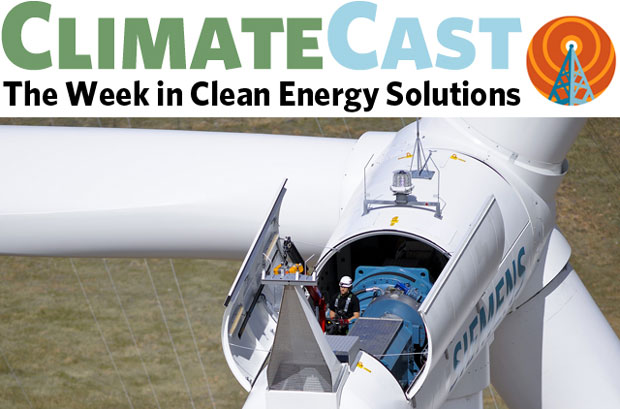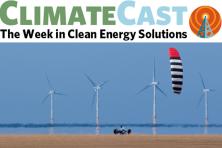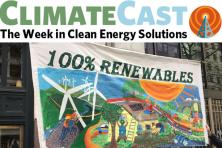Corporate America longs for clean energy
Microsoft will buy all its electricity from renewable sources on the open market, according to a deal it reached last week with Puget Sound Energy and state regulators. The agreement requires the software giant to pay $23 million and continue contributing to the utility’s efficiency and low-income-assistance programs, in a settlement that can serve as a template for other large customers to leave the utility, which gets nearly 60 percent of its power from fossil fuels. Similar corporate goals are driving clean energy growth elsewhere, too, with three Apple suppliers bowing to Apple’s pressure to buy only renewable power, and coal-friendly Kentucky crafting new utility rules so that big companies can buy a green power mix if they wish.
Power markets still adjusting to clean energy bounty
The Bonneville Power Administration has barred some wind electricity from the grid this spring, a result of abundant hydro and wind power coupled with a lack of transmission to carry the bounty to urban markets in western Washington and Oregon. The BPA reports on these “curtailments” here, where it has posted 17 such reports since mid-March. In California this spring, the grid is basking in so much solar power that market prices fell into negative territory—generators were paying to keep sending power onto the grid, to avoid the cost of shutting their plants and then restarting them. Plentiful wind power in Texas is also driving down wholesale electricity prices, according to Standard & Poor’s. One response is giving the grid new ways of soaking up power when it’s cheap, like these ice-makers that NRG is deploying in Southern California to shift air-conditioning demand away from peak times. Another is energy storage, which will earn users a state tax credit under a bill passed last week by Maryland legislators.
Electric transportation goes multi-modal
New options in electrified transportation appeared on the horizon, with Tesla promising that its electric semi-truck will be unveiled this fall, followed by an electric pick-up truck within two years. Seattle and Portland joined with two California cities to request a quote from auto-makers for electric service vehicles from police cars to garbage trucks, and a Seattle-based electric jet start-up won backing from Boeing and Jet Blue. The EV fervor pushed Tesla’s stock price above $300 per share, making the company’s market capitalization higher than Ford or General Motors—a phenomenon driven by investors’ faith in the Tesla story, analysts say. Meanwhile, the factors behind EVs’ feasibility are in play. The inventor of the lithium-ion battery, a 94-year-old Texas professor, announced his lab has developed a solid-state, non-combustible battery with three times the energy density of Li-ion; auto reviewer Edmunds concluded that EVs need the $7,500 federal tax credit to compete; and Rocky Mountain Institute warned that utilities’ demand charges could undermine the profitability of the high-powered fast chargers that EVs need to refuel on long trips.
Climate void left by feds beckons for new state action
California’s climate cap-and-trade program got wind in its sails last week with an appeals court decision that the program’s requirements don’t amount to a tax—a ruling that matters because taxes must pass the legislature with a two-thirds majority. The ruling—soon to be appealed to the state’s highest court by the conservative Pacific Legal Foundation—includes language that is unusually stirring for a court brief: “Contrary to suggestions by plaintiffs...there is no vested right to pollute in California.” Nevertheless, California climate advocates are trying to assemble a two-thirds majority to extend the cap and trade law beyond 2020, just to remove all doubt. These state rules are especially important as federal action is likely to grind to a halt during the Trump administration, although more states will have to step up to the plate to make up for federal back-sliding. One state in the vanguard is Oregon, where the legislature is considering the Clean Energy Jobs bill, which includes a climate pollution cap. Another Oregon bill to require the state to analyze decisions for their climate impact attracted national attention but a Senate committee declined to pass it last week.
Trump unusually focused on anti-environment moves
The impact of President Trump’s executive orders has been uneven, with some toothless because they exceed his statutory authority, and others amounting to mere directives to study a problem and report back. Another compilation finds that Trump’s policies face deep-seated opposition from firms with long time horizons, such as utilities and insurance companies. Elizabeth Kolbert attributes Trump’s anti-climate zeal to the inherent contradiction between acknowledging a global problem and President Trump’s nationalist ideology, even as his rollbacks of environmental protection threaten to unleash leaks from coal ash ponds in states where he won enthusiastic support last November. Trump’s refusal to embrace the Paris climate accord scuttled a planned communiqué at the end of last week’s G-7 summit in Rome. The administration is said to be planning a meeting Tuesday to hammer out its position on the Paris pact; last week, EPA chief Scott Pruitt said that the US should leave the agreement over outdated concerns that it asks too little of India and China, but most of corporate America backs a global climate policy.
Solar hits some big-league benchmarks
The US solar industry now employs more people than Apple, Google, and Facebook combined, according to new figures from The Solar Foundation, and solar’s coming eclipse of fossil power is heralded by the Kentucky Coal Mining Museum, which is installing a 60-kW rooftop solar array to reduce its $2,100 monthly electric bills. PV prices worldwide continue to fall: analysts forecast that this year will see the first bid for solar power below 2 cents per kWh, and India just signed another record-low solar power contract. As solar power becomes less expensive, US rooftop installations are shifting to outright purchase from the leasing model popularized by SolarCity and Vivint. The next hurdle is bringing down installed costs from the US average of $3 to $3.50 per watt to something closer to the European average of $2. One issue: customer acquisition represents a stubbornly high cost to installers, now accounting for nearly 20 percent of the system price.
Thinking about 100 percent clean
Portland and Multnomah County announced plans last week to run on 100 percent clean electricity by 2035, and to transition completely away from fossil fuels for all uses, including transportation, by 2050, pending final votes later this year. The goals mirror those in a congressional bill authored by Oregon Sen. Jeff Merkley that calls for a nationwide 50 percent Renewable Portfolio Standard by 2030, the electrification of all heating and transportation, and the use of 100 percent clean energy by 2050. Energy researchers debate whether that goal can be achieved without nuclear power and carbon capture—a debate that David Roberts deconstructs here.
Image: A technician makes adjustments in the nacelle of a wind turbine at the National Wind Technology Center in Boulder, Colorado. Department of Energy / NREL photo by Dennis Schroeder, via Flickr.





